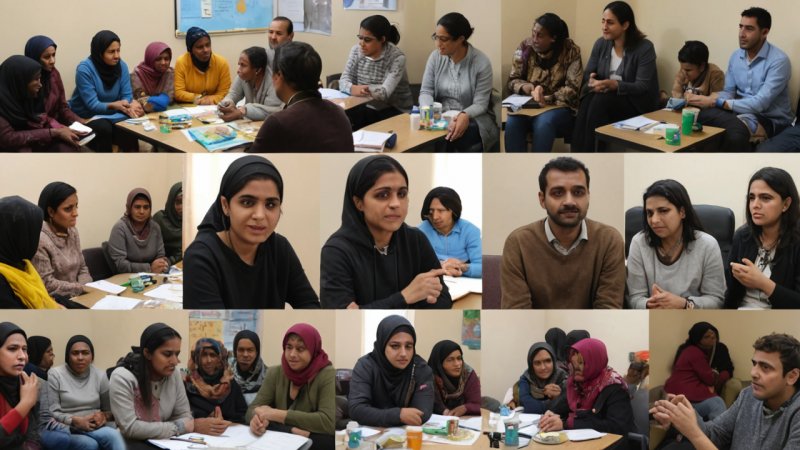The mental health needs of refugees are increasingly recognized as a critical aspect of humanitarian aid. As millions flee conflict, persecution, and disaster, the psychological impact of these experiences can be profound and long-lasting. Addressing these needs requires effective intervention strategies that can vary significantly in approach. This article compares two prominent methods of providing mental health support to refugees: community-based interventions and clinical interventions. By examining the pros and cons of each, we can better understand how to meet the mental health needs of displaced populations.
Understanding Community-Based Interventions
Community-based interventions focus on leveraging local resources and social networks to promote mental health and wellbeing. These strategies often involve training community members to provide support, fostering peer networks, and integrating mental health services within existing community structures.
Pros of Community-Based Interventions
- Accessibility: Community-based approaches tend to be more accessible as they utilize local resources and knowledge, making mental health support available to those who might otherwise be unable to access formal services.
- Cultural Relevance: These interventions are often more culturally sensitive, as they are designed and delivered by individuals who share similar backgrounds and experiences with the refugee population.
- Empowerment: Community-based interventions can empower refugees by involving them in the process, fostering a sense of ownership and agency over their mental health.
Cons of Community-Based Interventions
- Limited Resources: Community-based interventions may lack the funding and resources necessary to provide comprehensive mental health care, limiting their effectiveness.
- Variable Quality: The quality of support may vary significantly depending on the training and skills of community members, leading to inconsistent outcomes.
- Stigma: In some communities, mental health issues may still carry stigma, which can hinder participation in community-based programs.
Exploring Clinical Interventions
Clinical interventions, on the other hand, involve trained mental health professionals providing services in more structured settings, such as clinics or hospitals. These interventions often include therapy, medication, and other evidence-based practices aimed at addressing mental health disorders.
Pros of Clinical Interventions
- Expertise: Clinical interventions are delivered by trained professionals who can provide specialized care and evidence-based treatment for mental health disorders.
- Comprehensive Care: These interventions can offer a broader range of services, including medication, therapy, and crisis intervention, which can be crucial for those in acute distress.
- Standardization: Clinical interventions often follow established protocols and guidelines, which can ensure a more consistent level of care.
Cons of Clinical Interventions
- Accessibility Issues: Refugees may face barriers in accessing clinical services, such as language differences, lack of transportation, or fear of stigma associated with seeking professional help.
- Cultural Disconnect: Clinical approaches may not always take into account the cultural context of refugees, potentially leading to misunderstandings or a lack of engagement.
- Resource Intensive: Clinical interventions can be resource-intensive, requiring significant funding and infrastructure that may not be available in refugee settings.
Key Differences Between the Approaches
While both community-based and clinical interventions aim to address the mental health needs of refugees, they differ significantly in their methodology, accessibility, and cultural relevance.
Methodology
Community-based interventions rely on local engagement and peer support, while clinical interventions depend on professional expertise and structured treatment plans.
Accessibility
Community-based approaches tend to be more accessible due to their integration within existing community structures, whereas clinical interventions may pose barriers related to transportation, language, and stigma.
Cultural Relevance
Community-based interventions often reflect the cultural context of the refugee population, while clinical interventions may sometimes overlook these nuances, leading to less effective care.
Conclusion
Both community-based and clinical interventions have their unique advantages and challenges when addressing the mental health needs of refugees. Community-based approaches excel in accessibility and cultural relevance but may lack the resources and standardization seen in clinical settings. Conversely, clinical interventions provide expert care and comprehensive services but may face barriers to accessibility and cultural disconnect. A hybrid model that combines the strengths of both approaches may offer the most effective solution, ensuring that refugees receive the support they need in a manner that is both accessible and culturally appropriate. Ultimately, understanding these differences can guide humanitarian organizations in designing effective mental health interventions that truly meet the needs of refugee populations.






